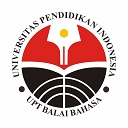Gairaigo in The Covid-19 Pandemic Era: A Study of Transformational Generative Phonology
Abstract
Transformational Generative Phonology is a phonological theory that treats the distinguishing feature as the smallest unit and connects the distinguishing features and lexicons with phonological rules. This research has been conducted by several previous researchers, but study regarding the object in the Covid-19 pandemic is still limited. The purpose of this study was to explain the phonological process and phonological rules of foreign loan words into Japanese using transformational generative phonological approach. This study used descriptive qualitative method. Sources of the data were obtained from vocabularies or terms that appeared during the Covid-19 period. The results of this study indicated that there were six phonological rules which include, 1) the addition of the phoneme [u] at the end of words; 2) the addition of the phoneme [o] at the end of the word; 3) Addition of phoneme [u] in the middle of the word, 4) Addition of phoneme [o] in the middle of the word; 5) Addition of phoneme [k] at the end of the word, and; 6) Substitution of phoneme [l] to [r]. So that the implementation of this research was to create a rule to make it easier for foreign learners of Japanese to understand the sound changes that occur in Japanese lingual units.
Keywords
Full Text:
PDF (IND)References
Asmarani, R., & Santoso, B. (2014). Pemanfaatan Online Dictionary Dalam Menterjemahkan Teks Prosedur Bahasa Indonesia Ke Dalam Bahasa Inggris. Semantik, 4(1), 171–178.
Chomsky, N. (1957). Syntactic structures. London: Mouton and Company.
Chomsky, N. (1965). Aspects of the theory of syntax. Cambridge: M.I.T. Press.
Darwish, H. M. (2015). “Arabic Loanwords in English Language”. IOSR Journal of Humanities and Social Sciences, 20 (7), 105-109.
Hardiany, D. R. (2019). Proses Fonologis pada Prefiks /me-/ dalam Bahasa Indonesia. PHILOSOPHICA Jurnal Bahasa, Sastra, Dan Budaya, 2(1), 33. https://doi.org/10.35473/po.v2i1.238
Muslihah, M. (2018). Proses penyerapan kata bahasa Inggris ke dalam bahasa Jepang: (Kajian fonologi generatif transformasional). Izumi, 7(2), 73. https://doi.org/10.14710/izumi.7.2.73-83.
Koizumi, T . (1993). Nihongo Kyoushi no Tame no Gengogaku Nyumon. Taishuukan Shoten, Tokyo. Kridalaksana, H. (1993). Kamus Linguistik. Ed. ke-3. Jakarta: PT Gramedia.
Kusuma, I., & Anam, M. K. (2019). Adjective Intensifier of Javanese Diphthong in ponorogo: A Study of Transformational Generative Phonology. Lingua Didaktika Jurnal Bahasa Dan Pembelajaran Bahasa, 13(2), 154-164. https://doi.org/10.24036/ld.v13i2.38185
Putradi, A. W. A. (2016). Pola-pola perubahan fonem vokal dan konsonan dalam penyerapan kata-kata bahasa asing ke dalam bahasa Indonesia: Kajian fonologi. Jurnal Arbitrer, 3(2), 95-112. https://doi.org/10.25077/ar.3.2.95-112.2016
Sudaryanto, S. (1993). Metode dan Teknik Analisis bahasa: Pengantar Wahana kebudayaan Secara Linguistik. Yogyakarta: Duta Wacana University Press.
Sudjianto, S. & Dahidi, A. (2007). Pengantar Linguistik Bahasa Jepang. Bekasi: Kesaint Blanc.
Schane, S. A. (1973). Generative Phonology. Michigan: Prentice-Hall.
Schane, S. A. (1992). Fonologi Generatif. Jakarta: Summer Institute of Linguistics Indonesia.
DOI: https://doi.org/10.17509/japanedu.v6i2.32363
Refbacks
- There are currently no refbacks.
Copyright (c) 2021 JAPANEDU: Jurnal Pendidikan dan Pengajaran Bahasa Jepang

This work is licensed under a Creative Commons Attribution-ShareAlike 4.0 International License.
 Published by:
Published by: Department of Japanese Language Education, Faculty of Language and Literature Education
Universitas Pendidikan Indonesia
 Online ISSN: Online ISSN:2528-5548 |

JAPANEDU: Jurnal Pendidikan dan Pengajaran Bahasa Jepang (e-ISSN:2528-5548) lisenced under a Creative Commons Attribution-ShareAlike 4.0 Internasional (CC BY-SA 4.0)


